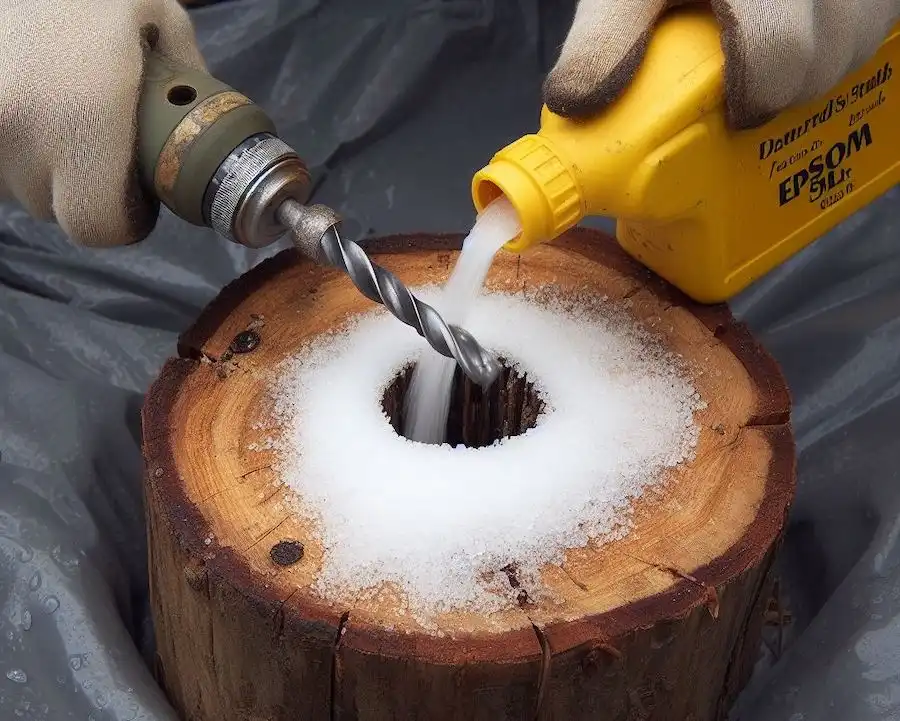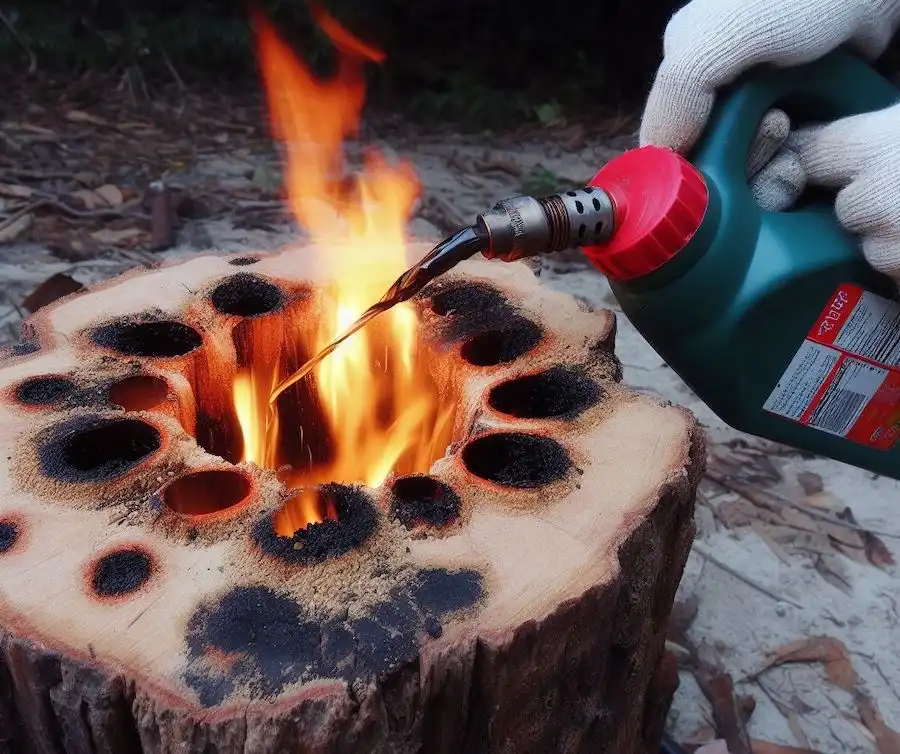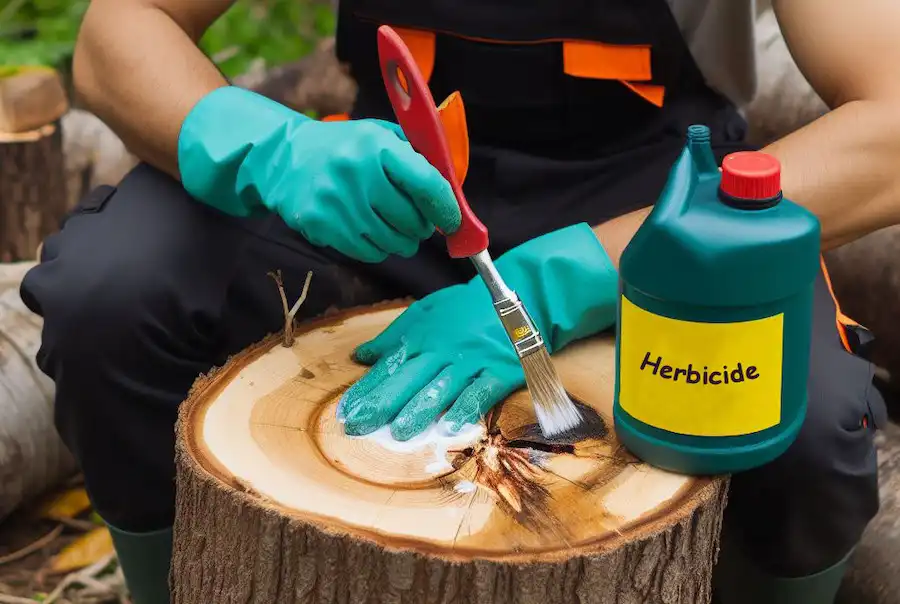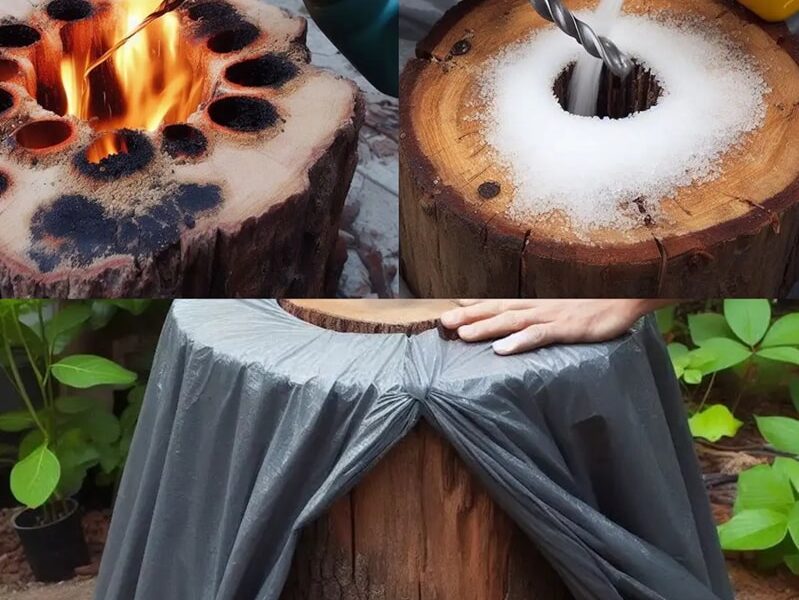How to remove a tree stump: 4 alternative methods
Maintaining a beautiful landscape sometimes requires the removal of trees, including their stumps. If a tree has become unsafe, is in decline, or simply needs to be cut down for other reasons, the stump often remains. It is essential to intervene on the stump and roots to prevent regrowth and facilitate the reconversion of the area.
Here are four non-toxic approaches to removing a tree stump, promoting natural decay. These methods range from the most environmentally friendly to those with greater environmental considerations.
#1 Cover the stump
The simplest and most natural method of dealing with a tree stump is to cover it. This approach is non-invasive and helps speed up the natural decay process.

To use this technique, cover the stump tightly with a waterproof, opaque sheet. This will deprive the stump of light and moisture, accelerating its breakdown. Although this method is slow (taking six to eighteen months), it is environmentally friendly and requires minimal effort.
#2 Epsom salt method
Another approach to removing a tree stump is to use Epsom salt, which dehydrates the plant through a process known as desiccation.
This method is safe for the surrounding environment and soil. The steps include:
- Drill holes in the stump, using a 1/2-inch drill bit.
- Fill the holes with Epsom salt and tamp.
- Wet the log without washing away the salt to help it absorb into the wood.
- Cover the log with a waterproof and light-resistant sheet.

This method typically takes a few months for the stump to become brittle and decompose.
#3 Controlled burn
Controlled burning should be carried out with caution, preferably in less populated areas after confirming that it is legal with local authorities.
For a controlled burn:
- Remove flammable materials around the stump.
- Drill large, deep holes in the log.
- Carefully fill the holes with kerosene.
- After ensuring safety measures, light the log.
- Monitor the burn until complete, then dispose of the remains safely.

Keep in mind that controlled fires may be prohibited in your area and that safety precautions are critical.
#4 Herbicide application
The fastest method, but at the same time with the greatest environmental impact, is the use of herbicides. Select a product formulated for woody plants, such as Triclopyr, and apply it carefully to avoid damaging other vegetation.
To apply herbicide:
- Make new wounds in the stump if it has not been cut recently.
- Protect yourself with protective clothing and gloves.
- Use a brush to carefully apply the herbicide to the surface of the stump.
- Dispose of application tools safely.

The stump should absorb the herbicide and cease to be viable within a few days.
Remember, while herbicides offer a quick fix, they also carry the risk of environmental damage and should be used responsibly. Always follow local regulations regarding stump removal and consider the environmental impact of your chosen method.
Inspired by this? Share the article with your friends!
